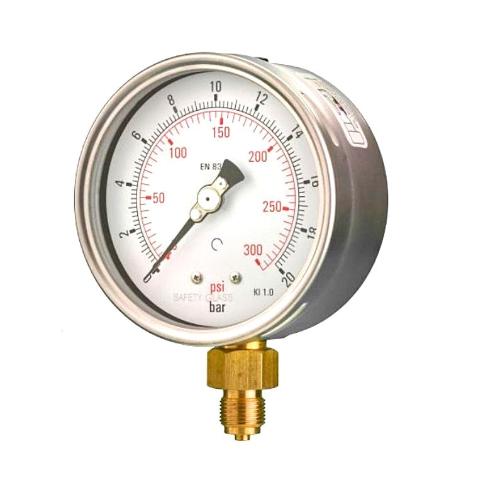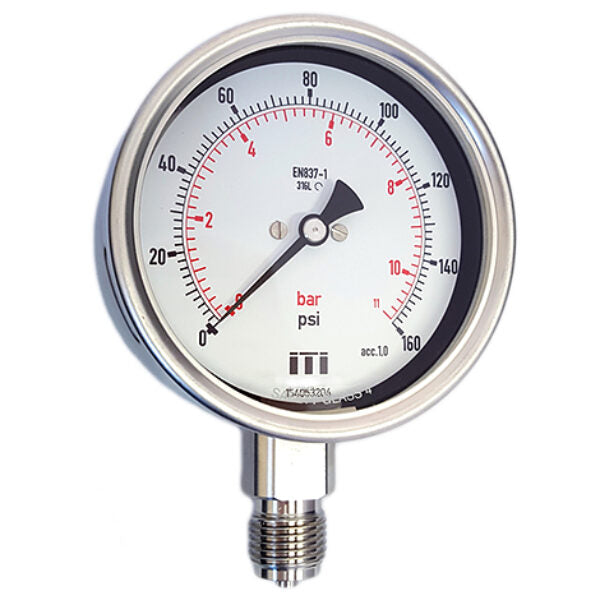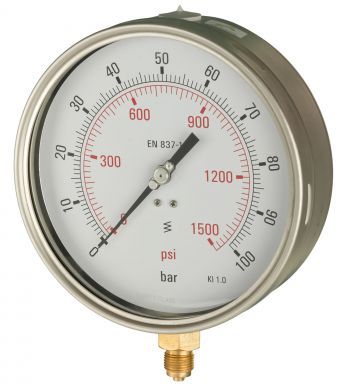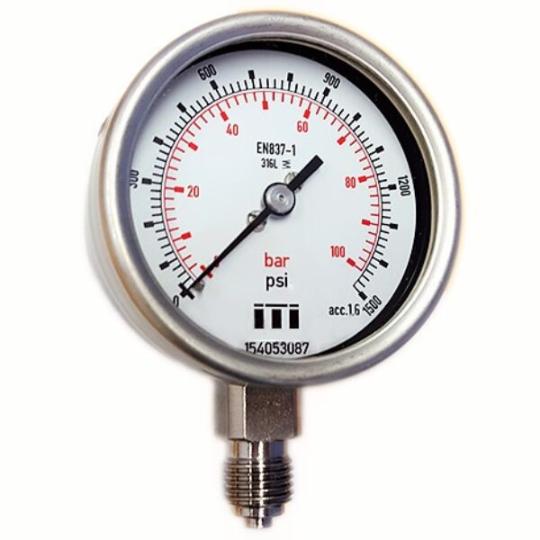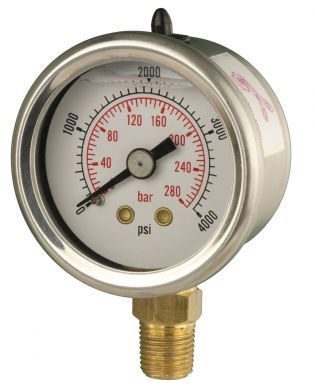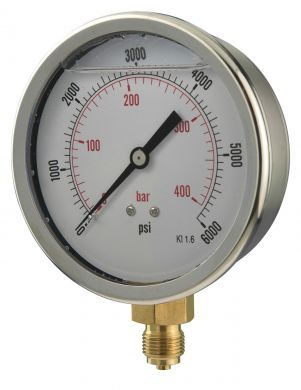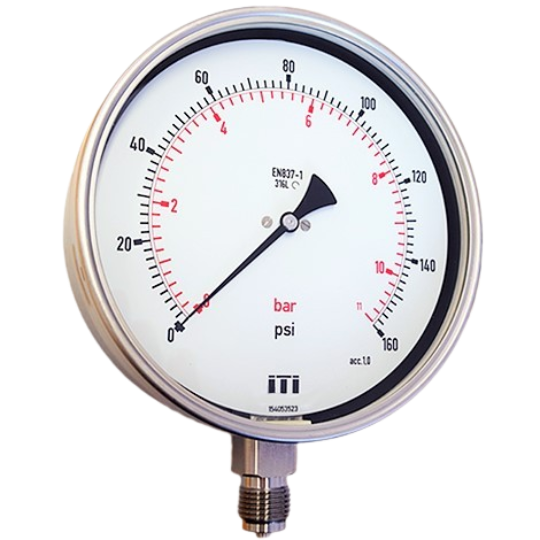High quality process pressure gauges manufcatured using Bourdon tube technology, delivering accurate and reliable pressure measurement across a wide range of industrial applications.
Designed to withstand demanding operating conditions, these instruments are available in pressure ranges up to 1000 bar.
Each gauge is precision manufactured to ensure long-term stability and durability, and is supplied complete with a UKAS traceable calibration certificate, guaranteeing compliance with international standards and providing assurance of measurement accuracy for critical processes
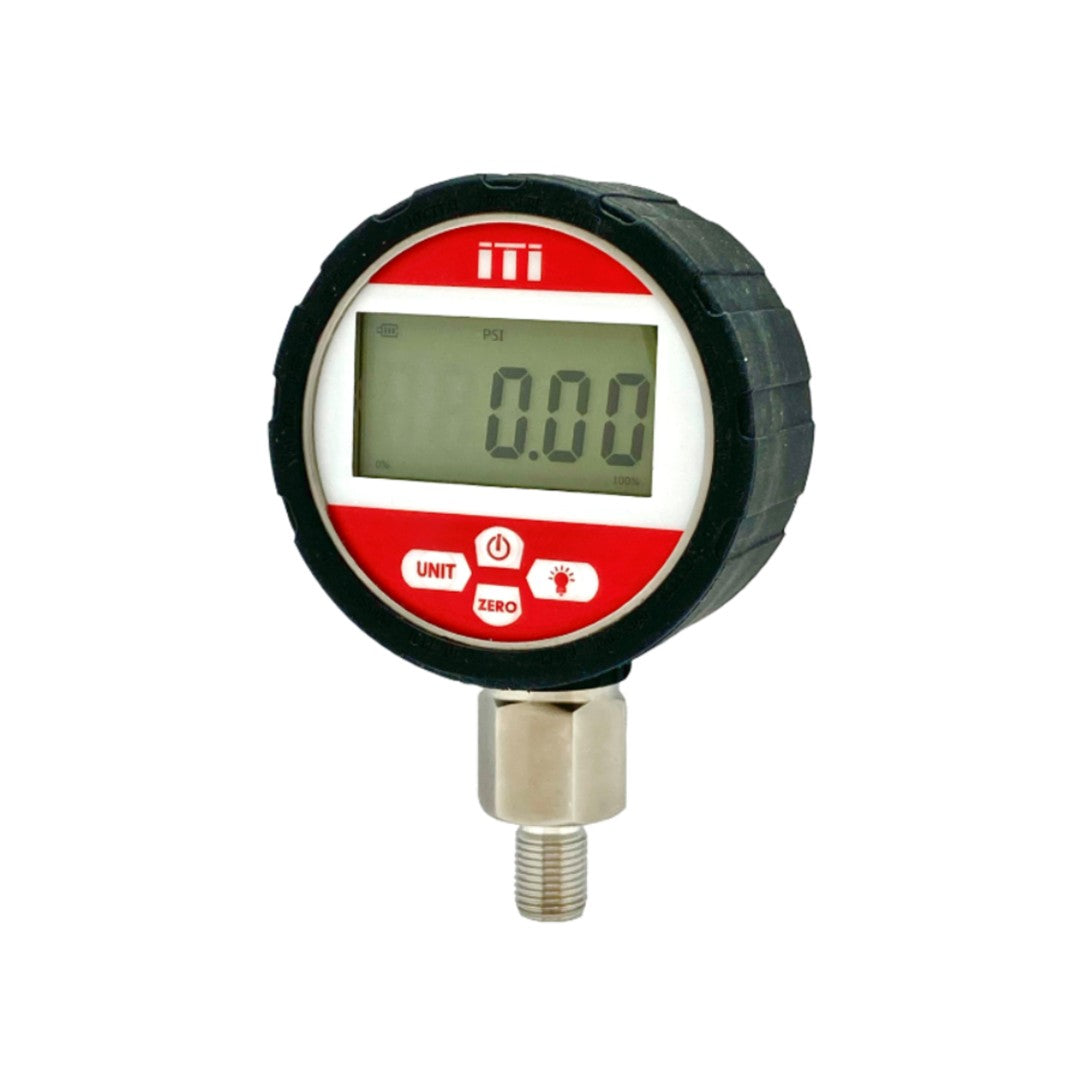
ITI Digital Pressure Gauge (+ Calibration Certificate)
Sale priceFrom £120.00
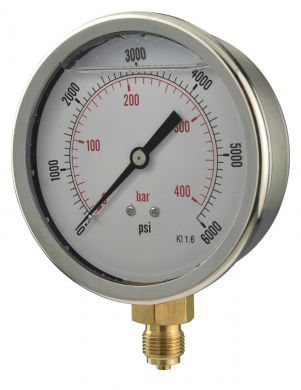
100mm Glycerine Filled Vacuum Compound Gauge (Calibration Included)
Sale price£45.00
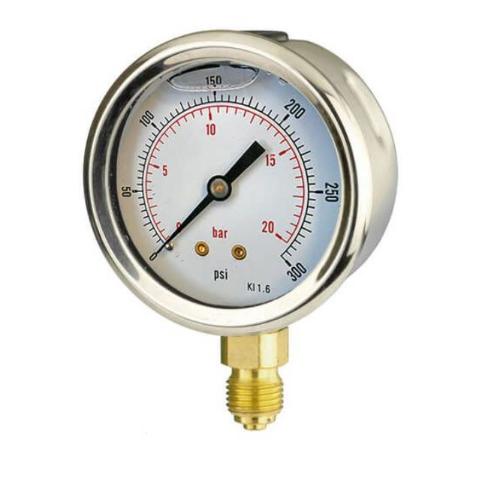
63mm Glycerine Filled Vacuum Compound Gauge (Calibration Included)
Sale price£40.00

